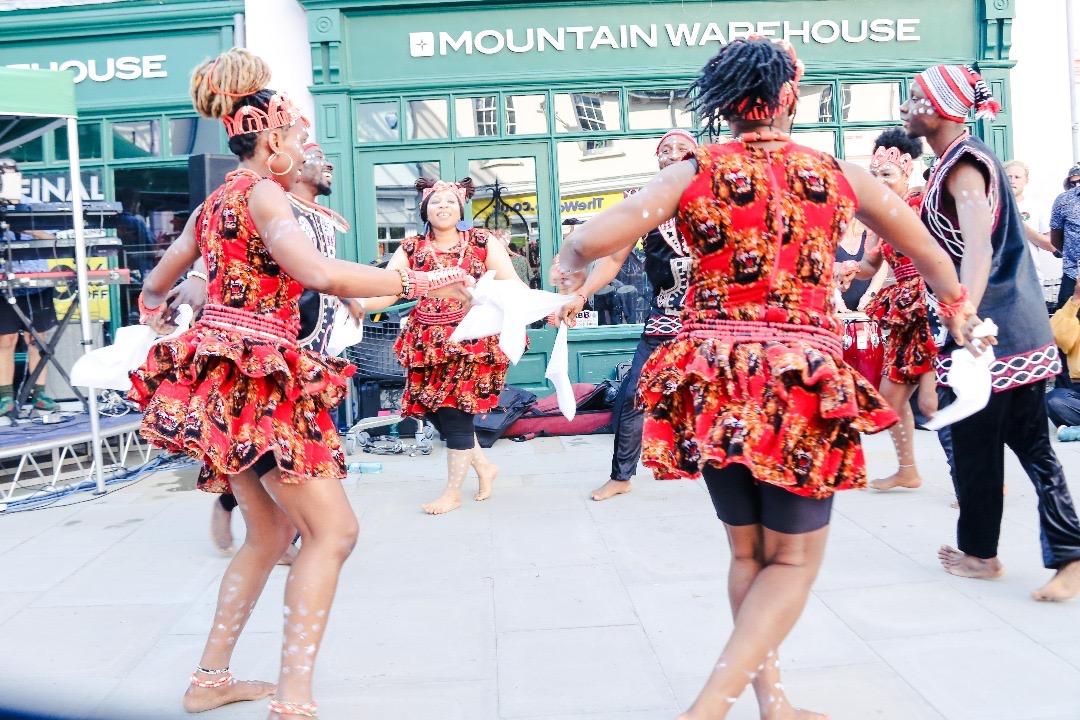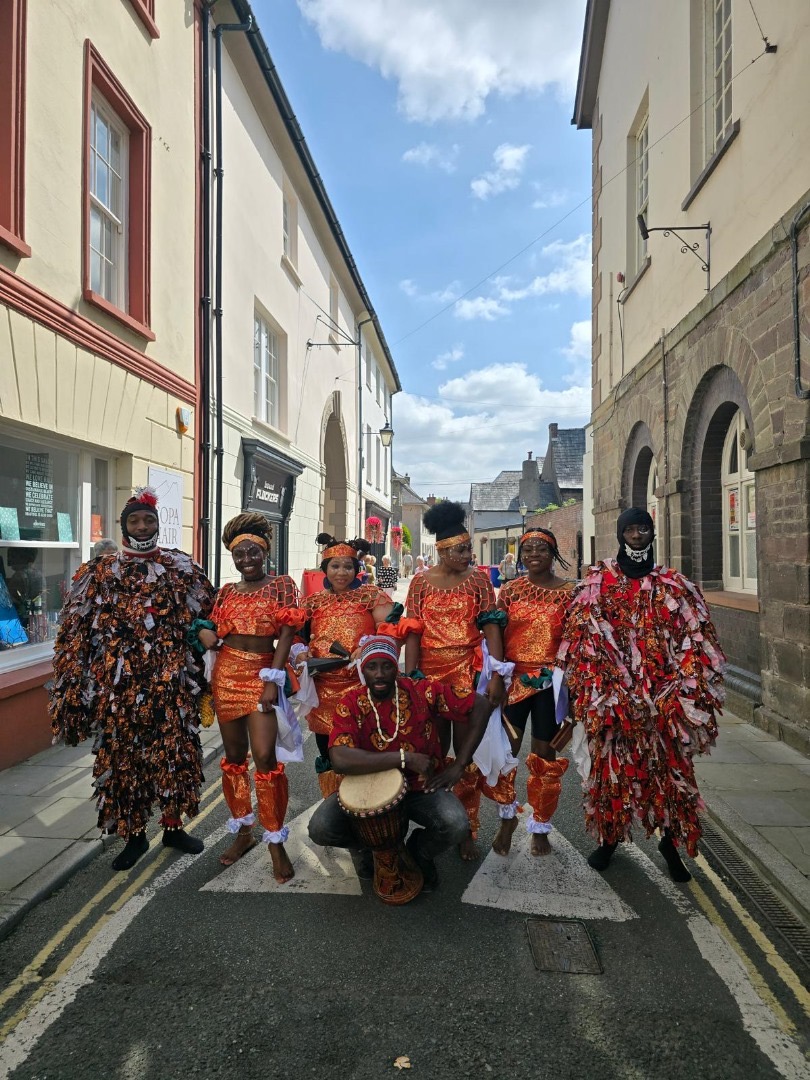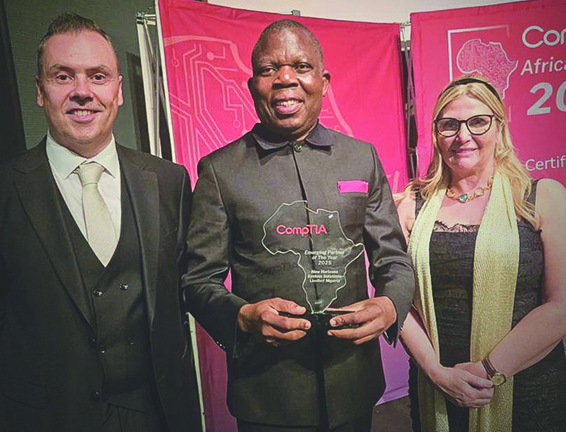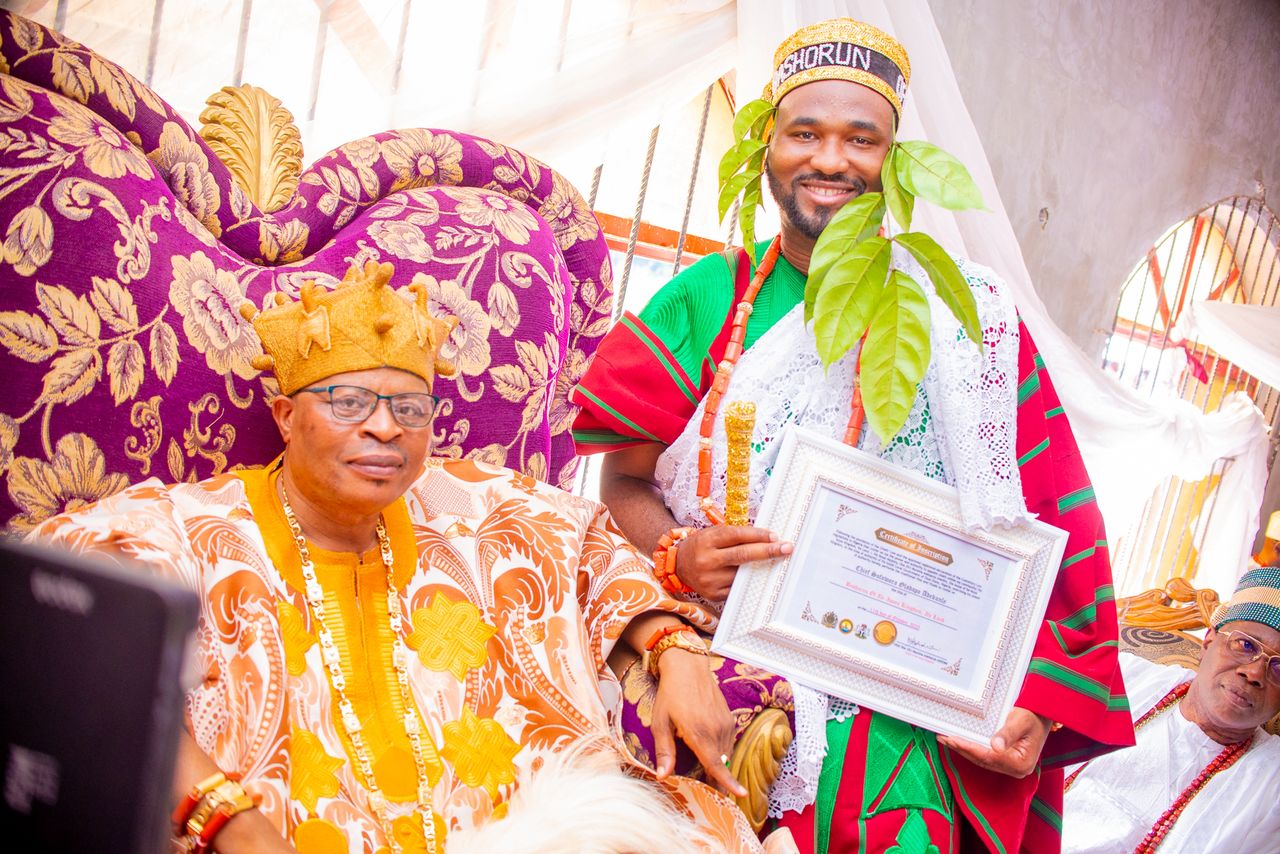The continuing quest in search of peace, healing and a sense of belonging remains a burning issue globally, amid climbing migration statistics, displacement, conflict, socio-economic instability, and inequality concerns.
It is within this sphere that Nganga Performing Arts and Mobile Theatre has emerged as a once-budding-now-blooming force, blending rhythm and stories to promote inclusion, wellbeing, diversity, cultural preservation and cultural pride. Nganga’s performances, rooted in African culture and traditions, resonate across borders as a movement focused on bridging continents.
Four key members of the Nganga Troupe—Founder/Artistic Director, Chinyere Chukwudi-Okeh; Head Drummer/Dancer, Valentine Chigozie Oguejiofor; Lead Choreographer/Dancer, Sandra Ogochukwu Nwaizugbo; and Multidisciplinary Artist and Foremost Member, Emmanuel Chinedu Chimodo—speak on their task as performers of cultural and artistic renditions, and the unique role of the Nganga in reshaping memory and fostering unity.
What was the inspiration for founding the Nganga Performing Arts?
Chinyere: Nganga has its origins in the need to reconceptualise performance, way beyond the borders of entertainment. My intention was to create a platform that can effectively balance the contexts of culture, tradition, performative heritage and contemporary realities. “Nganga”, according to the Igbo and Bantu etymology, is a word that reflects a sense of cultural pride and therapeutic healing. And by semantic extension, the word provides the nexus for the Nganga Performing Arts and Mobile Theatre as a bridge that links African heritage, creative and cultural wealth, with diasporic realities. Through performance, we generate knowledge into the repository of multicultural talents in Wales. With Nganga, the rhythm represented in dance and musical notes of drums, flutes, feet and body movements becomes an avenue for restoration, education, integration, enlightenment, and healing. Our Performing Arts’ vision is to keep traditions vibrant, while remaking cultural dynamics into tools for all-round well-being across communities globally. It is this vision that continues to drive our evolution.
So, what particular circumstance piqued your interest on the need for African cultural renditions in Swansea? Could you share some of your early performances and the corresponding reception the Nganga Performing Arts received?
Chinyere: When I moved to Wales, I noticed an obvious vacuum in how expressions of the African heritage were depicted. Unlike the living productions which the African traditional arts represent, they were portrayed within the context of superficial aesthetics. This constituted a major gap, as it appeared there was some subconscious detachment from history. That was a turning point for me. I felt that people needed to see the true beauty of African cultures beyond textbook presentations and museum reflections. And so Nganga started, with performances in community centres, schools, and religious gatherings. We were not sure what to expect at first, but the response was quite overwhelming. From the feedback we received, it became evident that the humane nature of our performances was distinct. In fact, after a storytelling session, a member of the audience said to me, “I didn’t understand the words, but I felt like my grandmother was speaking to me.” That further convinced me of the necessity of this task. Such responses confirmed that we were on the right path.
Still on the origin of Nganga, Valentine, how did you find yourself within the embrace of the dance and the drum?
Valentine: My dancing days date back to my childhood years in Anambra State, Nigeria. In my culture, music-plus-dancing is a way of life. As a child, I attended festivals and ceremonies in the village, and during these activities, drumming played a key role.
However, at the university in Swansea was where my drumming skills took on a more refined structure, as I came to the realisation that drumming is central to cultural connections.
This awareness expanded my role from participant to custodian, allowing me to explore the drum’s role not just as rhythm, but as language and memory.
So, when you consider the distinct roles of drums from an African perspective, what would you say is the significance of rhythm in Nganga’s renditions?
Valentine: Rhythm is that which permeates an entire performance. Across African communities, the drum manifests not just as a mere object, but as a ‘living’ entity. When I say ‘living’, I mean within the realm of personification, such that the drum lives and breathes, albeit with the support of an accompanying performer.
As Head Drummer for Nganga, the drum holds a special place in the space of reverberating rhythms that bring forth pulsating energy. This rhythm, which constitutes the nucleus of our performance, brings to mind the extraordinary role of the performing arts in promoting healing and engendering a needed sense of community. It is through rhythm that our audience finds connection.
Sandra, as lead choreographer, what does movement mean to you, when examined through the eyes of re-presenting heritage via gestures?
Sandra: When I think of movement as a choreographer, I think of fluid transitions across interspersing threads of rhythmic dialogues. With each gesture, there lies history, memory, belonging, home. Each step in Nganga’s movement process brings to the fore a beautiful blend of cultural borders, whose walls have been broken down into smooth glides across forms, represented in varied backgrounds and cultural realities. As a choreographer, I understand what it means to be a repository of rites, influenced by the contemporary realities of global politics and migration motifs. With this background, movement becomes a signpost, signifying transformation and renewal. It serves not just as expression, but as a living archive of story and soul.
Choreography takes a certain level of depth to create. How would you describe your typical preparatory process?’
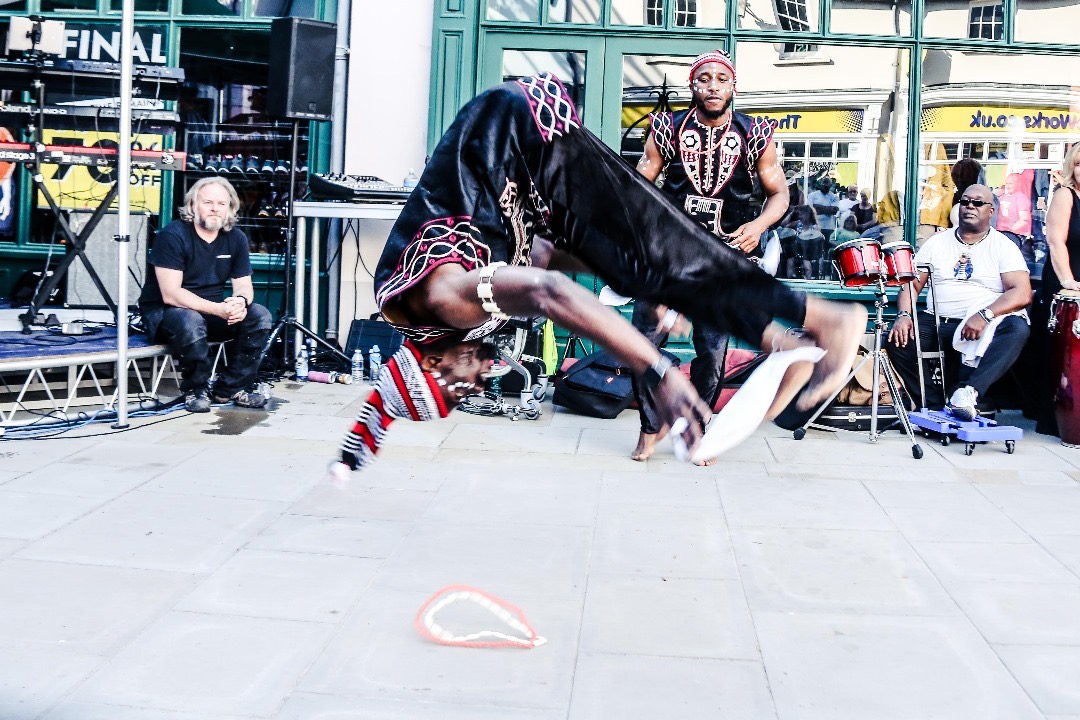
Sandra: The central thing is to listen; not casual listening with the ears, but hearing depth in the music, my body, and whatever imagery the rhythm evokes. The choreography could be based on a specific story as delivered by Chinyere or an open-ended narrative of performance. I take time to meditate, listening deeply to what my body and mind are trying to portray. I also research and improvise as necessary. The process can take days, and sometimes, weeks, depending on the nature of the performance. Choreography is also not static; I flow with the energy on stage, adapting to the flow of the rhythm, not just from the performance on stage, but also from the vibe of the audience. This dynamic process allows the dance to remain fresh and alive.
Flute performances tend to evoke a sense of the deeply emotional, especially in cultural settings. Emmanuel, what message do you think the Nganga flute style passes when you perform?
Emmanuel: In several African communities, research has shown that the flute holds a special place. Whether at rites of passage, weddings, burials, or storytelling settings, the flute remains a most perceptible source of rhythmic means of communication. In my handling of the flute for Nganga, the space of sound becomes a spiritual scope, such that it presents a link between the ancestral and the contemporary, between the ‘home’ (as in place of origin) and the ‘home’ (wherever a person has chosen to find a sense of belonging). With the flute, a bridge between the past, present, and the future is established. It becomes a voice that resonates with longing, memory, and hope.
And how did you learn to play the flute so well?
Emmanuel: Well, let’s say I and the flute found each other. My interest in the flute started when I was much younger, and in the church choir. Afterwards, I learned with a recorder in school. However, Nganga has opened up more enlightening sound waves of what the flute represents, especially having listened to older persons in traditional settings. I have come to learn that through me, the flute speaks across audiences, carrying messages of joy, pain, loss, and becoming whole again. It has become more than an instrument; it is a companion in storytelling.
Nganga has, in recent times, been framed as ‘ontological’. Is this a correct perspective of your performances?
Emmanuel: The ontology resonance is a major part of what makes Nganga tick. When we perform, it is not just for the sake of entertaining an audience. With the flute comes the ability to render a spiritual sense of community, portrayed in physical reawakening.
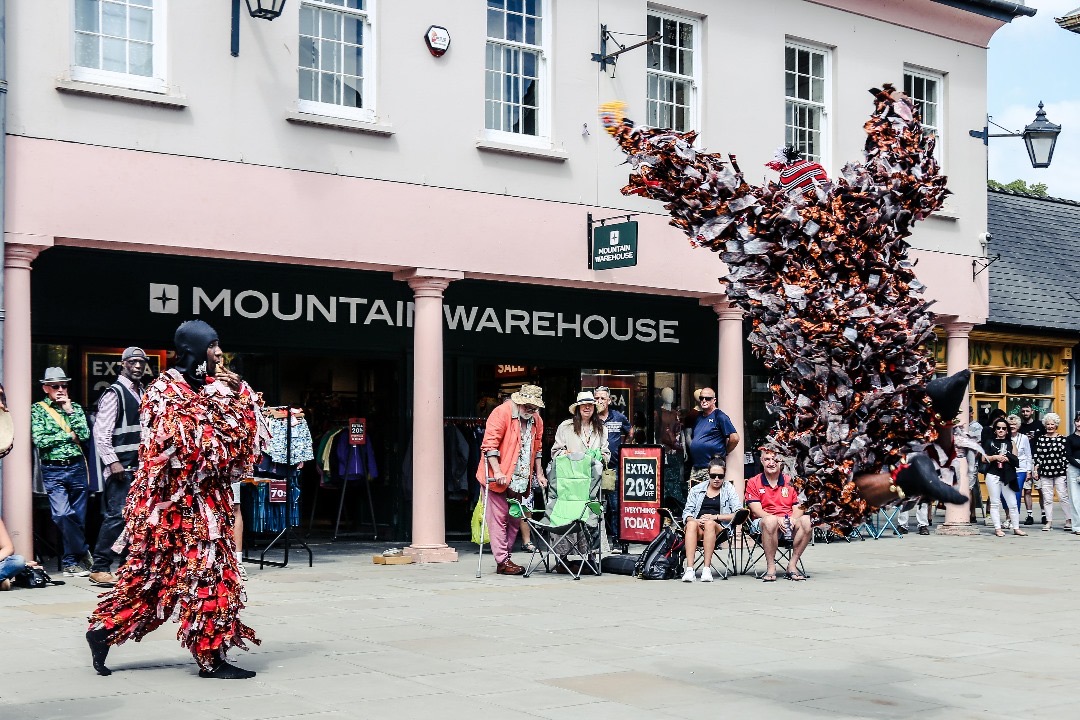
Chinyere: That description fits aptly into the focus of the Nganga Performing Arts. For every musical note, gesture, foot work, or hand dexterity, our performance affirms the adept nature of African expressions in terms of cultural sovereignty. Our performances move beyond the confines of long-held assumptions about African heritage, by providing the platform for reshaping history, one root at a time.
Sandra: In movement and gestures, the scope of ontological renditions rings true. Dance becomes not just mere aesthetic floweriness of movement, but a deliberate focus on promoting visibility and lasting significance.
Valentine: The ontological element is a current that passes through the core of our performances. When I work the drum, it feels like a conversation with a healthy mix of the before, the now, and the after.
Nganga has evolved from being just a dance group to becoming a mobile theatre of increasing relevance. What are some of your activities that have contributed to this evolution?
Chinyere: Nganga, as a mobile theatre collective, takes the performance to the audience, rather than wait for the audience to find us. We organise workshops in care homes, refugee centres, schools, public parks, etc.
These workshops include spoken word performances, drumming, dance therapy, choreography, among others. Beyond the performances, we are involved in curating at exhibitions, literary publications, as well as providing mentorship sessions for budding artists. In this sense, our context of mobility is not just in the sense of being a physical cultural movement, we also take into cognisance the need for intellectual and cultural mobility.
When you say ‘cultural mobility’, do your performances resonate with the African notions of journeys such as the Igbo Onye Ije, Agaracha, Ije Awele, and the Yoruba figure of Ajala the Traveller?
Valentine: For Nganga, cultural mobility engages these contexts, but on a deeper level. For instance, in Igbo cosmology, Onye Ije (that is, ‘one who travels’) is a respected personality; Agaracha is a reference to a person who seeks fruitful experiences and refuses to be confined to familiar settings, while Ije Awele means ‘a graceful journey’.
While Nganga engages with these notions, our performances move beyond the scope of tourism to something within the realm of emissaries; that is, our work isn’t based on surface-level interpretations, but on engaging deeper meaning.
Chinyere: The Yoruba contextualises Ajala the Traveller as a figure that signifies healthy curiosity and cultural exchange. Nganga fits into this context, in the sense that we see mobility beyond superficial engagements with moving from one place to the next, but as a mindset of actively promoting culture wherever we perform, bringing tradition to doorsteps.
How would you say Nganga engages pan-African philosophies as represented in principles such as Uhuru, Sankofa, Ubuntu, and even the Ikigai concept of the Japanese?
Sandra: Let me take the Sankofa concept, which has origins in Ghana and means ‘go back and fetch it’. This revolves around what we do, in the sense that every movement, each gesture signifies a link between the past and the present, laying the path for the future.
Chinyere: The Ubuntu philosophy, which means ‘I am because we are’, is at the heart of our performances. We work with the mindset of collective healing and shared knowledge; that is, when we perform, we invite you to share and connect to the richness of tradition.
Valentine: From the Uhuru perspective comes the sense of freedom. Drumming serves as an expression of liberation, affirming agency and presence.
Emmanuel: The Ikigai context, which is the Japanese notion for embracing a passion that gives joy, effectively relates the marked importance of what Nganga represents. In essence, Nganga is a sacred call to positive purpose.
How has the audience reception shaped your creative journey, particularly in communities where these cultural themes are either deeply embedded or largely unfamiliar?
Chinyere: It’s been a mixed experience, really. In communities where the stories are familiar, it feels like a call and response. There is a shared memory that binds us. You can feel the recognition in the audience’s breath, in their silence, in their tears. But in places where these stories are unfamiliar, you see a different kind of listening. There is curiosity, sometimes confusion, but always a reckoning. People instinctively recognise truth, even when it is not their own.
Valentine: What’s been beautiful is seeing how younger audiences respond. For many of them, we are stitching together gaps between what their elders never told them and what their education erased. We have had young people come backstage to say, “I didn’t know we could talk about this out loud.” That tells us we are doing something necessary.
You mentioned earlier the spiritual aspect of your performances. Could you elaborate on how you balance artistic technique with spiritual invocation?
Sandra: For us, performance is not separate from ritual. Every rehearsal begins with libation, not because it is performative, but because we are entering sacred space. The choreography is technical, yes, but it is also devotional. The rhythm of the drum is both metronome and medium. We are not just moving our bodies, we are invoking memory, sometimes even mourning.
Emmanuel: Our elders teach us that not all knowledge is verbal. So when we dance or chant, we are speaking in ways the intellect alone cannot. We are not trying to impress, we are trying to align. There have been times we have had to pause a performance because something else, something spiritual, has arrived in the room. That is not theatre. That is the unseen showing up.
In the face of ongoing colonial residue in education, museums, and art spaces, how do you see your work pushing against erasure?
Chinyere: The system was designed to forget us. That is the truth. And we refuse to comply. Every time we wear our regalia, every time we speak our language, every time we name our gods and tell our grandmother’s stories, we are committing an act of resistance. We are saying, “We were here before empire, and we will be here after.”
Valentine: It is also about reclaiming the frame. When African bodies appear in museums or films, it is often from the lens of pity or pathology. We reject that. We show ourselves in our fullness: our joy, our rage, our sensuality, our grief. Not for validation, but for rebalancing.
How do you collaborate internally as a collective? With such powerful individual voices, how do you hold space for each other in the creative process?
Sandra: It starts with listening. Everyone’s story matters, and we give each other room to bring our full selves. Sometimes that means pausing a rehearsal to allow someone to cry or speak or be held. That emotional labour is part of the art.
Emmanuel: We argue too, let us not lie. But it is not destructive. We have built trust, and we know that when someone challenges your idea, it is because they care about the vision. We all carry different pieces of the ancestral puzzle, and the final work is stronger when all those pieces are honoured.
What does healing mean to you, as individuals and as a collective?
Valentine: Healing is not forgetting. It is remembering with clarity, without being imprisoned by the pain. For us, healing happens in the drumbeat, in the sway of hips, in sweat. It is collective. You cannot heal in isolation. The community must hold you.
Chinyere: Sometimes healing is rage, a righteous, cleansing rage. We do not always look for neat endings. Sometimes the ritual ends with a scream, and that is the medicine. Other times, it is laughter after the crying, and that too is sacred.
Looking ahead, what are your hopes for Nganga Performing Arts and its impact on the continent and beyond?
Sandra: We want to take our work deeper into the villages where oral histories are still alive. That is where the gold is—those grandmothers sitting on stoops, those forgotten initiation songs. We want to archive those stories, not in museums, but in living performances that travel and teach.
Emmanuel: Internationally, we hope to disturb comfort. We want to show that African stories are not just aesthetic experiences but political ones. That migration is not just about borders, but about memory and the longing for return.
Valentine: And we hope to remain whole. To resist the pressure to dilute our voices for palatability. Our ancestors did not cross oceans for us to become silent.
What would you say is your most memorable performance yet?
Valentine: Hmm… there have been quite a number of memorable performances. However, the performance at the community for the deaf, held at the Dylan Thomas House, stands out. I say this, because that performance proved significantly the impact of shared community and inclusion. The joy in the faces of those in the audience radiated through every vibrating pulse of our performance that day. The energy was delightfully infectious!
Chinyere: Thinking about it now, there are quite a number of memorable performances that come to mind. However, I would also say the performance at the Dylan Thomas House takes the top spot at this time. It reflected again the significance of the Nganga spirit, showing forth the possibilities that can abound in promoting accessibility and inclusivity.
Sandra: A memorable moment for me was our performance during the Refugee Week at St David’s Square. The performance was electric and evident in people’s expressions. Members of the audience included people from places across the world, some of whom had become refugees as a result of crisis. When we featured our ‘Dance Circle’, we had quite a number of participants join in, fostering a sense of endless community captured in shared rhythms.
Emmanuel: There have been memorable performances, and for me, the memorability comes in waves and has manifested across several renditions. Every time a member of the audience joins the performance, there lies a sense of affirmation.
What would you want to be the message that you want audiences to note about Nganga?
Chinyere: That our impact goes beyond entertainment, and extends into cultural restoration, emotional transformation, and public enlightenment.
Sandra: That within the body lies a thriving repository of timeless healing and renewal.
Valentine: That drums carry a weight of linguistic stimulation, through beats that resonate with cosmic significance.
Emmanuel: That through music, spiritual awakening and mental rejuvenation can be experienced.
What does the future hold for Nganga?
Chinyere: We are working towards the vision of the establishment of a Centre for Diasporic Performance and Healing Arts, which would be an avenue to explore the fusion of performance and collaborative research. There are also activities geared towards expanding our mobile theatre beyond the shores of Europe and Africa. Also, there are plans in place to develop a digital archive that houses African cultural elements. In all, Nganga is just beginning.
Thank you all for your time!
Chinyere: Thank you, too, for having us.
NGANGA PERFORMING ARTS AND MOBILE THEATRE: A CLOSING REVIEW
Interviewing the members of Nganga Performing Arts and Mobile Theatre was like stepping into a living archive of African memory, rhythm, and resilience. From my first exchange with founder and artistic director Chinyere Chukwudi-Okeh, it was clear that Nganga is far more than an entertainment troupe; it is a cultural force committed to restoring traditions, fostering healing, and affirming identity.
Valentine Chigozie Oguejiofor’s drumming spoke of liberation and connection, not just as performance, but as language; Sandra Ogochukwu Nwaizugbo’s choreography revealed itself as a moving repository of history and renewal; and Emmanuel Chinedu Chimodo’s flute breathed ancestral whispers into contemporary air, bridging continents in a single phrase of melody.
In Swansea and beyond, Nganga has filled the void left by superficial representations of African culture, replacing them with authentic, embodied narratives that touch even those unfamiliar with the language or history. Their art is political, spiritual, and communal — a deliberate act against cultural erasure.
Whether performing in refugee centres, care homes, or at landmark festivals, Nganga invites audiences into a shared space of remembrance and reawakening.
As an arts and culture critic, I recognise in Nganga a rare synthesis — where tradition and innovation dance together, where rhythm becomes medicine, and where performance is as much about healing the soul as it is about moving the body. Nganga is not just performing; Nganga is becoming, and taking all of us along on the journey.
Anote Ajeluorou; a Nigerian journalist and art critic, known for founding and rebranding the online platform TheArtHubNg.
